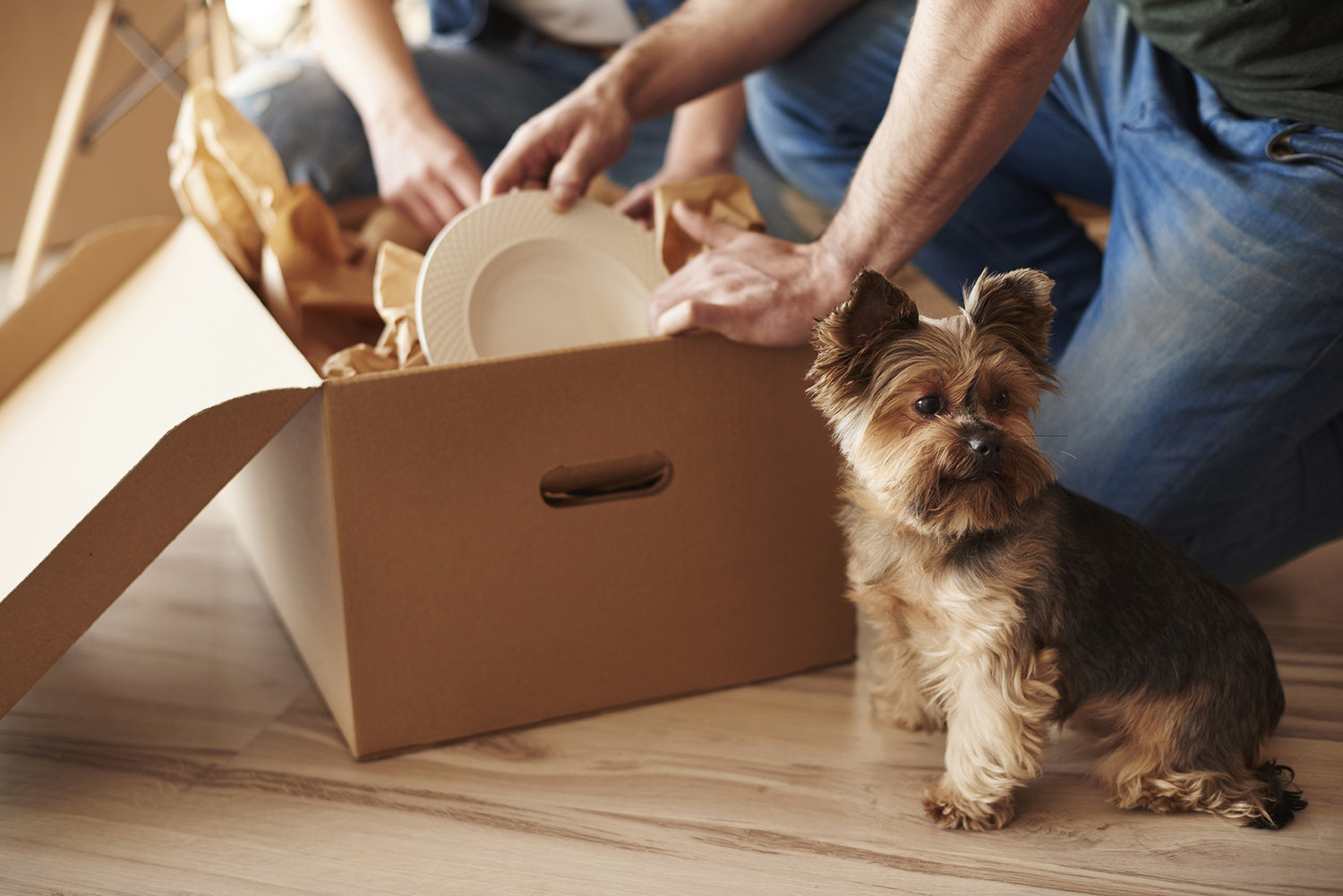PRECIOUS CARGO ON BOARD

Let’s be honest, moving can be stressful regardless of how you look at it. Moving with your beloved family pet? Talk about piling on some extra pressure for both you and Fido. The following tips will help make sure your dog is as stress-free as possible before, during, and after the move.
PLAY IT COOL

The sooner you can start planning, the better. There’s a lot to be done … whether you’re going across town or across the ocean, driving or flying, transporting your own belongings or hiring a mover. Pets usually sense that change is on the horizon, and may show their anxiety by acting unsettled or clingy.
Dogs are highly sensitive creatures who are very much in tune with their owner’s moods, both good and bad. Try to remain as zen as possible to avoid adding to your dog’s anxiety. Set an example by staying calm.
SLOW AND STEADY

Packing up all at once is likely to make your pets anxious, so start the process early and stretch it out over several days. Take breaks from packing to allow your pets to continue their routines.
To help ease the transition, bring the moving boxes in early and let them get accustomed to the packing supplies. Leave one room mostly intact until the last minute so your pets can have a familiar “safe space” to escape the moving chaos.
SECURE THAT CANINE CARGO

As soon as you decide to relocate, you should carefully consider how you’ll transport your four-legged family members to your new home.
TO DRIVE OR FLY?
Which is best?: The answer is likely to come down to distance. If your new home is within driving distance, transport your pets in a kennel by car or buckle them up with pet seat belts. Long-distance moves, especially international trips, may require a flight.
FLYING 101: PUP, PUP & AWAY!

If flying to your new home is the only option, you’ll want to leave plenty of time to make travel arrangements for your pets. Every airline has different regulations when it comes to animals, and these regulations change frequently.
If your pet is small enough to travel in a carrier that fits under your seat, many—but not all—airlines will permit your pet to travel with you in the cabin for a fee (typically $100-$150). If your pet must travel in cargo (where fees are usually higher), start by ensuring that you book with an airline that accepts your dog’s breed.
Additionally, every airline will require documentation from your veterinarian assuring that your pet is healthy enough to fly, so make an appointment to have your pet examined and brought up to date on vaccinations as soon as possible.
BONUS TIP(S): Booking your flights during off peak times, for example, during the week, or first thing in the morning, can also be a good option to try make it aboard a quieter, less bustling plane.
Playing airplane sounds, such as takeoff and landing, and gradually increasing the volume can help to desensitize your dog to the potentially scary sounds and prep him for a calm day of travel!
DRIVING 101: RUFF RIDERS

If your dog doesn’t routinely ride in the car, don’t jump right into a long expedition. Instead, the ASPCA recommends taking a series of short drives first, gradually increasing the amount of time while monitoring for any problems.
Your pup will require a crate for traveling by car. As anyone who has ever attempted to drive with a dog clawing to get over to your lap, letting pets roam free is dangerous. “It’s important to keep your animals in crates that are secured in your vehicle,” says Dr. Carly Fox, a staff veterinarian at NYC’s Animal Medical Center. “Pets, just like people, can become projectiles in accidents.”
If you plan to travel long distance by car, be sure to factor in rest stops and bathroom breaks for your dog every four to six hours. Will you need to make an overnight stop along the way? Book well in advance to make sure you can get a room at dog-friendly accommodation.
A NEW LEASH ON LIFE

Once you arrive to your new home, your pet will need some time to decompress from traveling. You may feel relieved when you arrive at your home, but for your pets, it is a whole new world. There are sights, smells and sounds to discover. Unpack their belongings first and set them in an area of the house that can be all theirs.
Introduce your dog to the area with walks, allowing him or her to stop and sniff around the neighborhood. For anxious pets, keep them in their crates when you leave the house until you are comfortable allowing them to roam. Pets with separation anxiety may require extra attention.
Extra snuggles are called for when you move into a new home. Try not to schedule a vacation right after you move. Exacerbating the number of changes could turn your pup into a depressed creature.